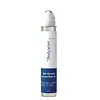What's inside
What's inside
 Key Ingredients
Key Ingredients

 Benefits
Benefits

 Concerns
Concerns

 Ingredients Side-by-side
Ingredients Side-by-side

Water
Skin ConditioningPropylene Glycol
HumectantGlycerin
HumectantRice Ferment Filtrate
Skin ConditioningBaicalin
AntioxidantCetrimonium Chloride
AntimicrobialKeratin
Skin ConditioningPalmeth-2
EmulsifyingCaffeine
Skin ConditioningBiotin
AntiseborrhoeicEthylhexylglycerin
Skin ConditioningXanthan Gum
EmulsifyingTocopherol
AntioxidantCocamidopropyl Betaine
CleansingPhenoxyethanol
PreservativeSodium Benzoate
MaskingPotassium Sorbate
PreservativeWater
Skin ConditioningPropanediol
SolventButylene Glycol
HumectantPropylene Glycol
HumectantGlycerin
HumectantSodium Metabisulfite
AntioxidantLarix Europaea Wood Extract
HumectantGlycine
BufferingZinc Chloride
AntimicrobialCamellia Sinensis Leaf Extract
AntimicrobialTrigonella Foenum-Graecum Seed Extract
PerfumingDiaminopyrimidine Oxide
Skin ConditioningPisum Sativum Sprout Extract
Skin ConditioningPhenoxyethanol
PreservativeSodium Benzoate
MaskingPPG-26-Buteth-26
Skin ConditioningPEG-40 Hydrogenated Castor Oil
EmulsifyingApigenin
AntioxidantOleanolic Acid
Skin ConditioningBiotinoyl Tripeptide-1
Ethylhexylglycerin
Skin ConditioningTrifolium Pratense Extract
Skin ConditioningRosmarinus Officinalis Leaf Extract
AntimicrobialPanthenol
Skin ConditioningMoringa Oleifera Leaf Extract
Skin ConditioningEDTA
Arginine
MaskingLactic Acid
BufferingGlycine Soja Germ Extract
EmollientTriticum Vulgare Germ Extract
Skin ConditioningScutellaria Baicalensis Root Extract
AstringentGluconolactone
Skin ConditioningCalcium Gluconate
HumectantSerenoa Serrulata Fruit Extract
Skin ConditioningParfum
MaskingCI 19140
Cosmetic ColorantCI 42090
Cosmetic ColorantWater, Propanediol, Butylene Glycol, Propylene Glycol, Glycerin, Sodium Metabisulfite, Larix Europaea Wood Extract, Glycine, Zinc Chloride, Camellia Sinensis Leaf Extract, Trigonella Foenum-Graecum Seed Extract, Diaminopyrimidine Oxide, Pisum Sativum Sprout Extract, Phenoxyethanol, Sodium Benzoate, PPG-26-Buteth-26, PEG-40 Hydrogenated Castor Oil, Apigenin, Oleanolic Acid, Biotinoyl Tripeptide-1, Ethylhexylglycerin, Trifolium Pratense Extract, Rosmarinus Officinalis Leaf Extract, Panthenol, Moringa Oleifera Leaf Extract, EDTA, Arginine, Lactic Acid, Glycine Soja Germ Extract, Triticum Vulgare Germ Extract, Scutellaria Baicalensis Root Extract, Gluconolactone, Calcium Gluconate, Serenoa Serrulata Fruit Extract, Parfum, CI 19140, CI 42090
Ingredients Explained
These ingredients are found in both products.
Ingredients higher up in an ingredient list are typically present in a larger amount.
Ethylhexylglycerin (we can't pronounce this either) is commonly used as a preservative and skin softener. It is derived from glyceryl.
You might see Ethylhexylglycerin often paired with other preservatives such as phenoxyethanol. Ethylhexylglycerin has been found to increase the effectiveness of these other preservatives.
Glycerin is already naturally found in your skin. It helps moisturize and protect your skin.
A study from 2016 found glycerin to be more effective as a humectant than AHAs and hyaluronic acid.
As a humectant, it helps the skin stay hydrated by pulling moisture to your skin. The low molecular weight of glycerin allows it to pull moisture into the deeper layers of your skin.
Hydrated skin improves your skin barrier; Your skin barrier helps protect against irritants and bacteria.
Glycerin has also been found to have antimicrobial and antiviral properties. Due to these properties, glycerin is often used in wound and burn treatments.
In cosmetics, glycerin is usually derived from plants such as soybean or palm. However, it can also be sourced from animals, such as tallow or animal fat.
This ingredient is organic, colorless, odorless, and non-toxic.
Glycerin is the name for this ingredient in American English. British English uses Glycerol/Glycerine.
Learn more about GlycerinPhenoxyethanol is a preservative that has germicide, antimicrobial, and aromatic properties. Studies show that phenoxyethanol can prevent microbial growth. By itself, it has a scent that is similar to that of a rose.
It's often used in formulations along with Caprylyl Glycol to preserve the shelf life of products.
Propylene Glycol is an odorless, colorless liquid. As a humectant, it helps skin retain moisture. It also aids in delivering active ingredients.
Another role of this ingredient is preventing a product from melting or freezing. Propylene glycol also adds antimicrobrial properties to a product, elongating product lifespan.
This ingredient is considered an organic alcohol and commonly added into both cosmetics and foods.
Those with sensitive skin or conditions may develop a rash when using this ingredient.
Learn more about Propylene GlycolSodium Benzoate is a preservative. It's used in both cosmetic and food products to inhibit the growth of mold and bacteria. It is typically produced synthetically.
Both the US FDA and EU Health Committee have approved the use of sodium benzoate. In the US, levels of 0.1% (of the total product) are allowed.
Sodium benzoate works as a preservative by inhibiting the growth of bacteria inside of cells. It prevents the cell from fermenting a type of sugar using an enzyme called phosphofructokinase.
It is the salt of benzoic acid. Foods containing sodium benzoate include soda, salad dressings, condiments, fruit juices, wines, and snack foods.
Studies for using ascorbic acid and sodium benzoate in cosmetics are lacking, especially in skincare routines with multiple steps.
We always recommend speaking with a professional, such as a dermatologist, if you have any concerns.
Learn more about Sodium BenzoateWater. It's the most common cosmetic ingredient of all. You'll usually see it at the top of ingredient lists, meaning that it makes up the largest part of the product.
So why is it so popular? Water most often acts as a solvent - this means that it helps dissolve other ingredients into the formulation.
You'll also recognize water as that liquid we all need to stay alive. If you see this, drink a glass of water. Stay hydrated!
Learn more about Water